The following equipment and facilities are available to book – with permission of the lab’s managing research team – by RMIT researchers and members of industry, government research institutes, and external university researchers.
Additive manufacturing

Used for visually examining samples under high magnification.

Used for cutting metal samples to be mounted for optical or electron microscopy.

Used for grinding & generating polished cross-sections of samples for imaging. Up to 6 samples can be processed simultaneously.
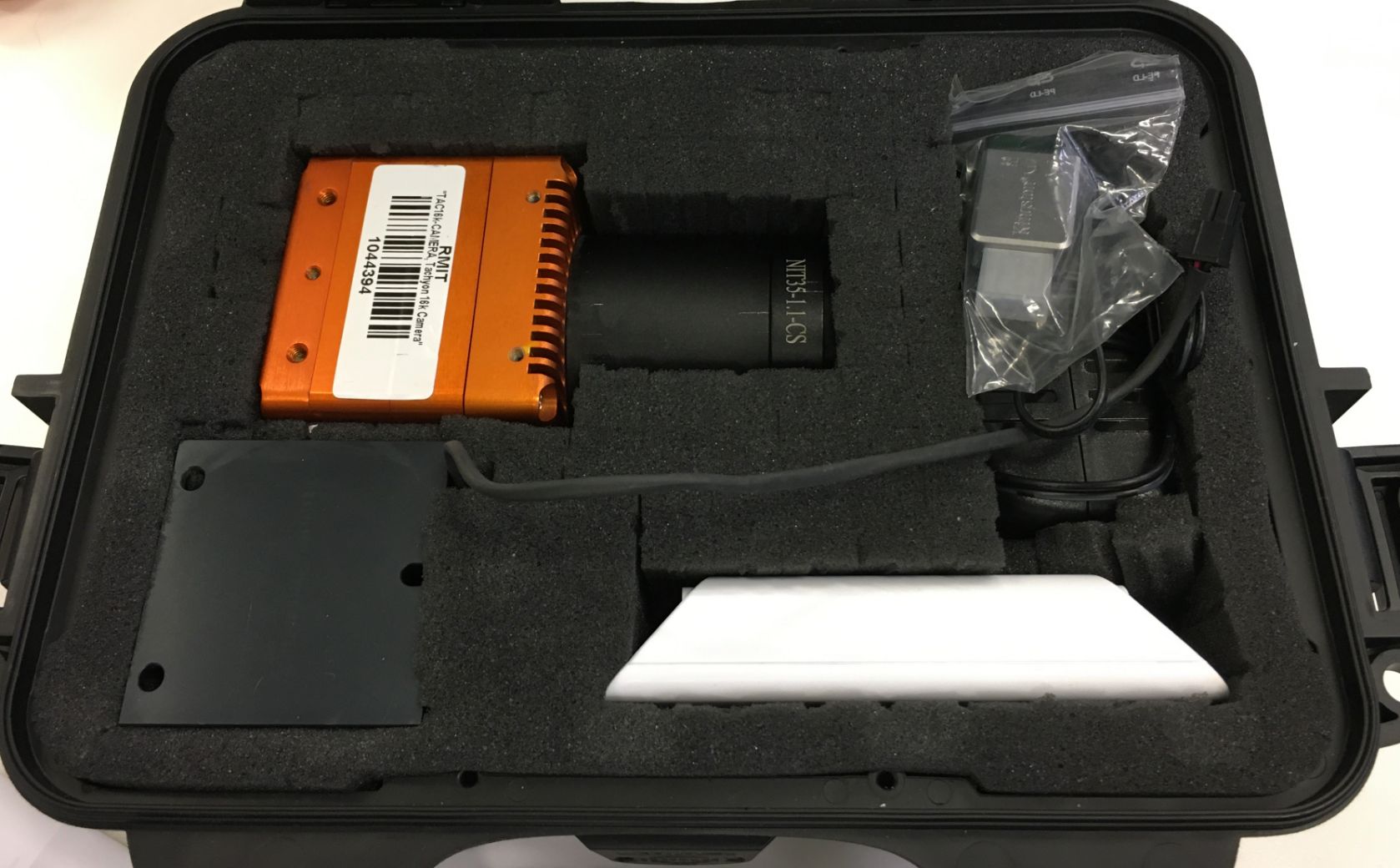
High-speed medium-wave infrared (MWIR) camera for controlling & monitoring industrial processes operating at variable temperatures.
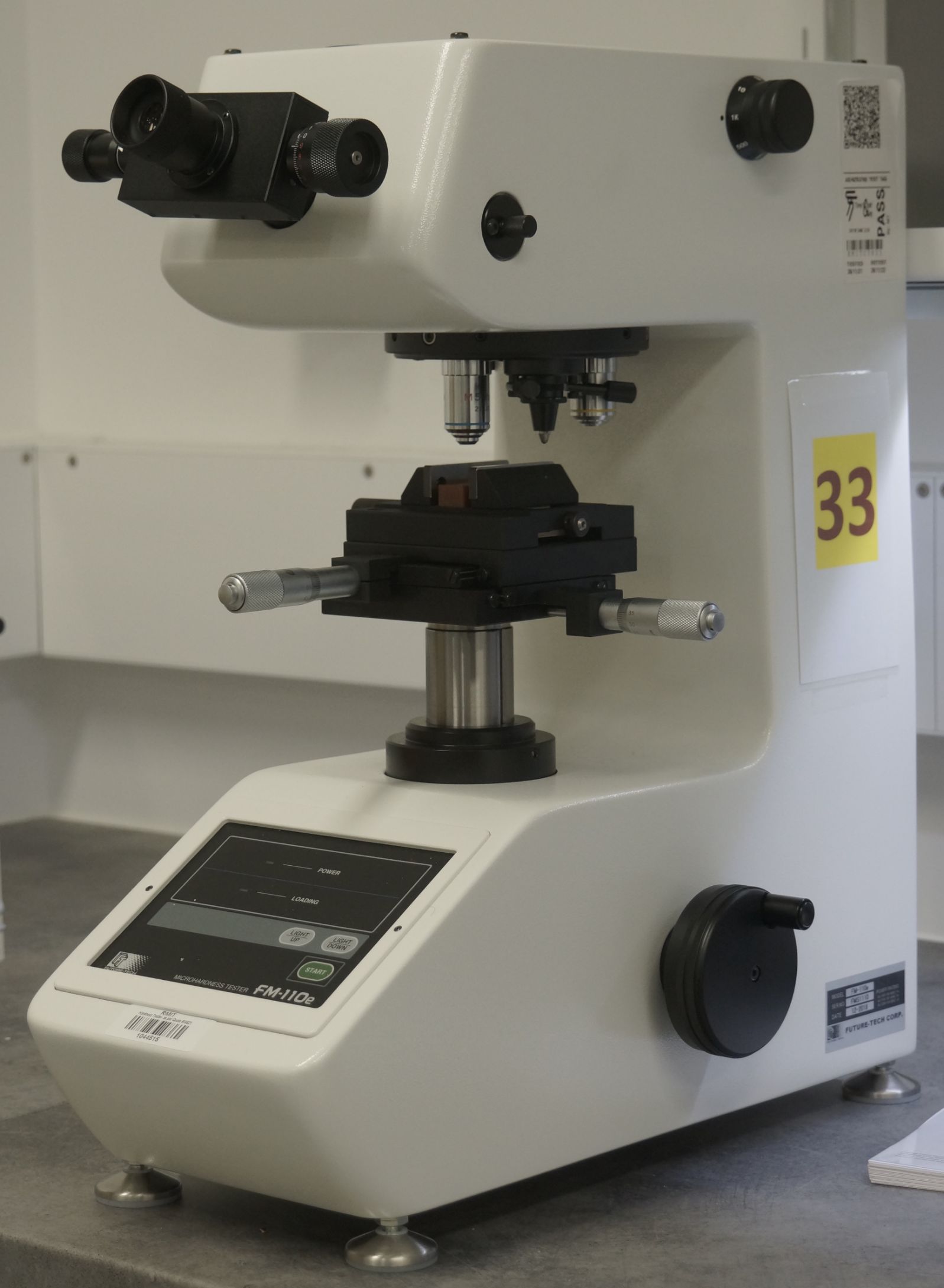
Used for making precise Vickers (HV), Knoop (HK), Brinell (HB), and fracture toughness (Kc) measurements.
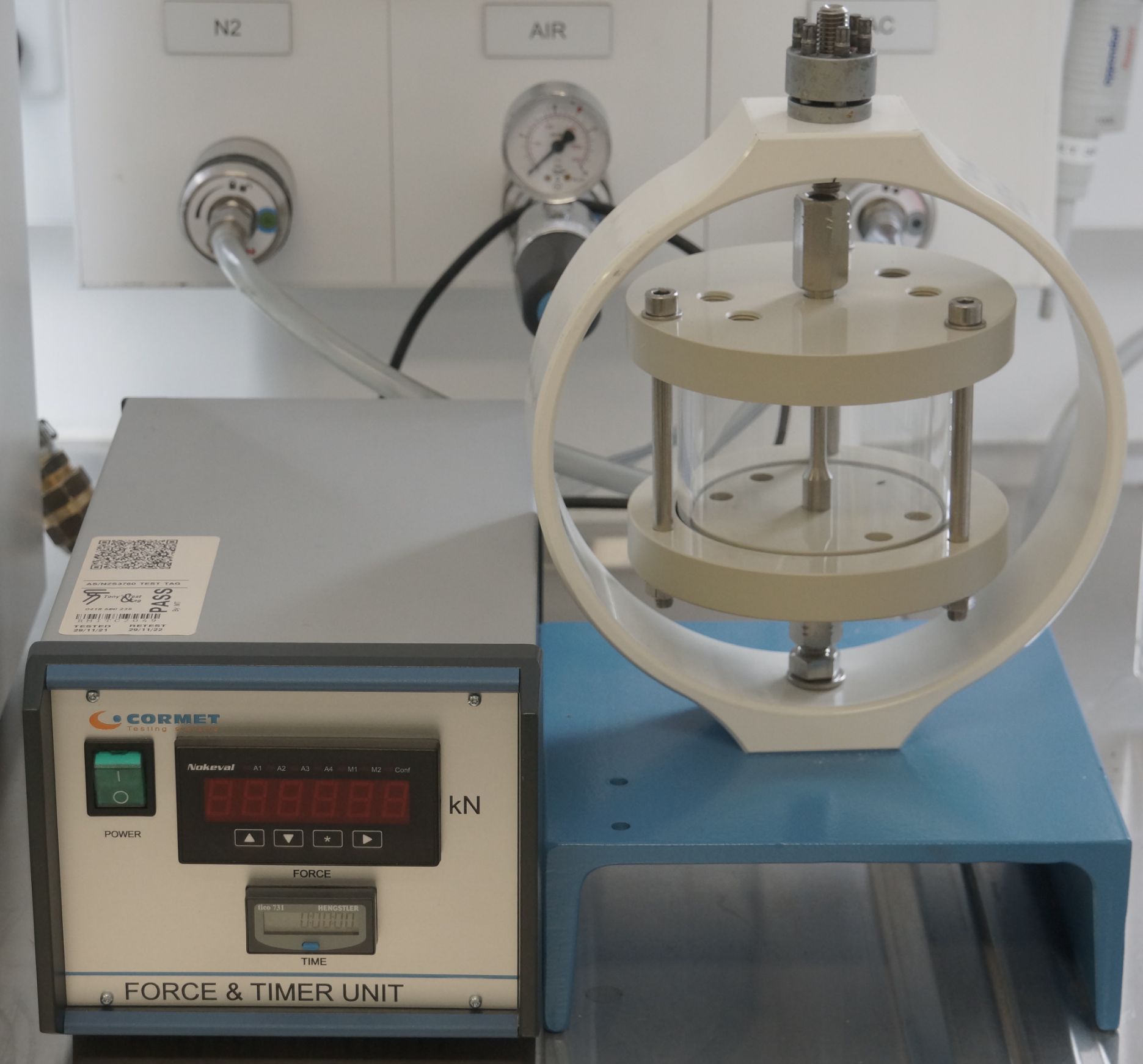
A proof ring is a simple, constant-load device for round tensile specimens. It is used to evaluate metal for environmental cracking resistance under uniaxial tensile loading. A tensile specimen is loaded to a particular stress to give a failure/no-failure test result. Quantitatively, the failure can be determined using a time-to-failure parameter.
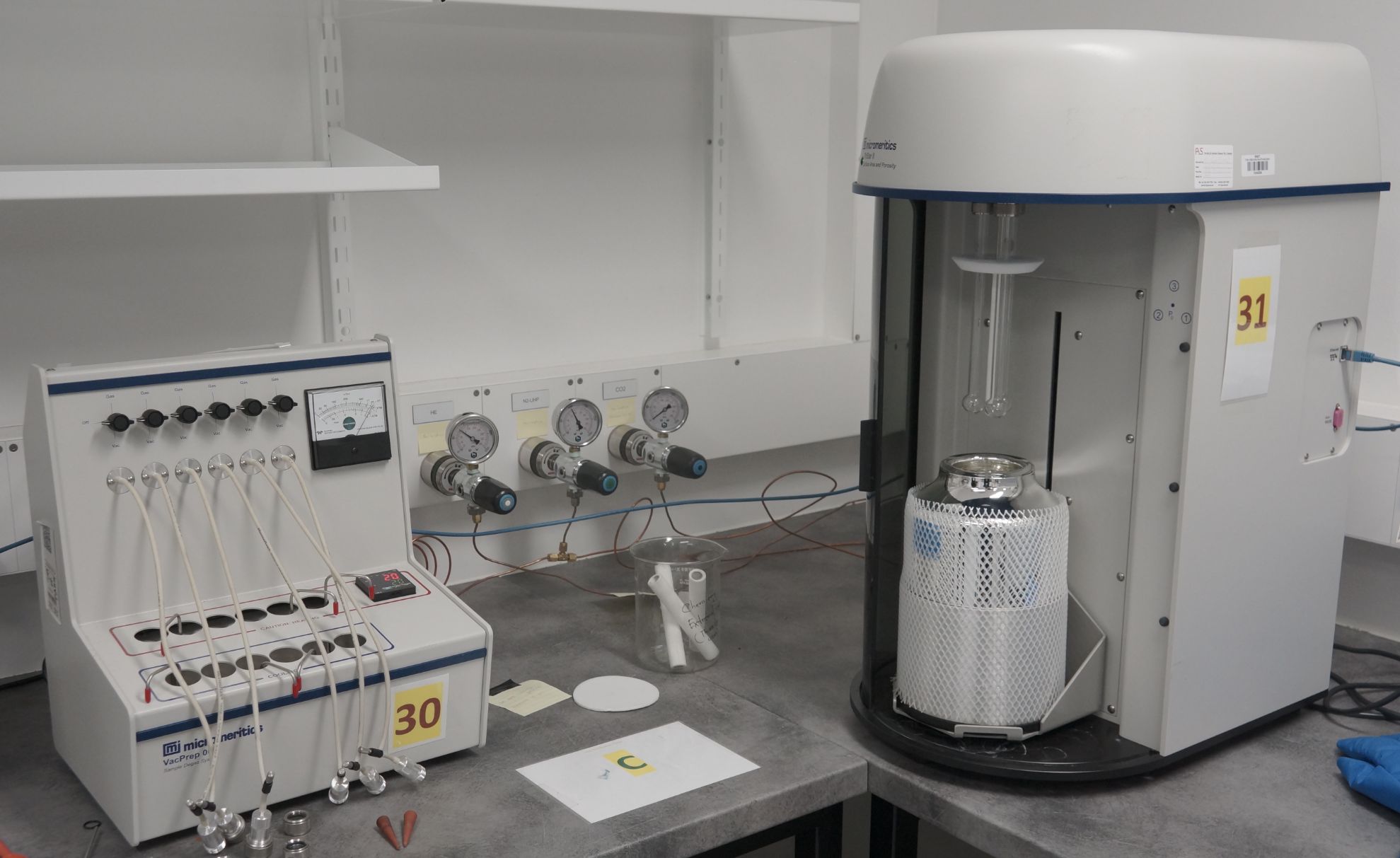
The Micromeritics TriStar II provides fully automated surface area & porosity measurements on solid materials by using the technique of gas adsorption. This tabletop instrument is designed to analyse up to three samples simultaneously.

The Celestron Handheld Digital Microscope Pro is an easy to use, low-power microscope with a 5 MP sensor camera system for capturing photos & video. Being portable, it can be used in the field, i.e. away from the lab.
Corrosion testing and control

Used for making thin films by dropping droplets of solution onto samples.

Used for cutting metal samples to be mounted for optical or electron microscopy.

Used for grinding & generating polished cross-sections of samples for imaging. Up to 6 samples can be processed simultaneously.
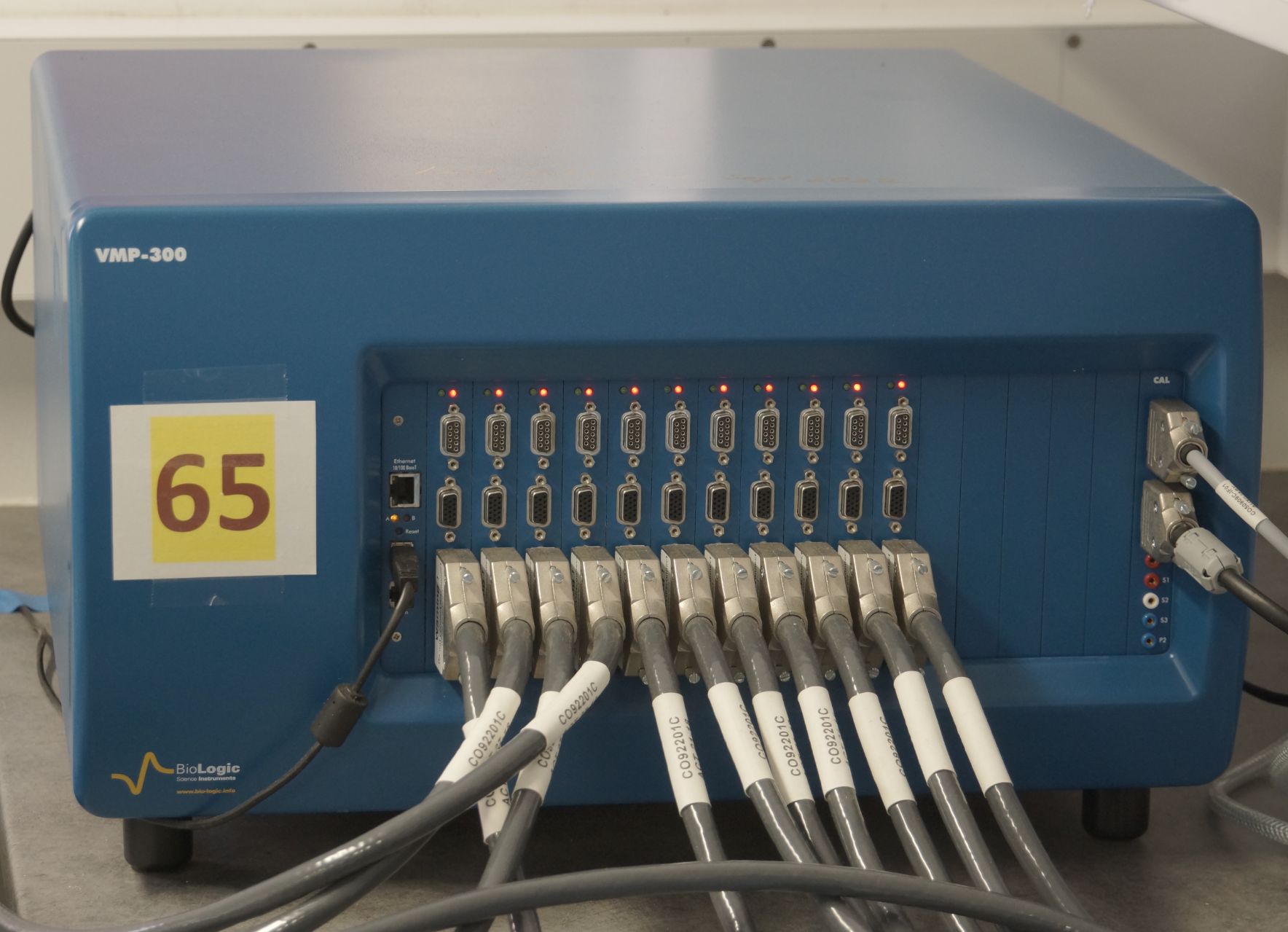
Used for electrochemical experiments of metal corrosion samples. Typical test methods, which are customised by the user, include OCP (open circuit potential), PDS (potentiodynamic scan), LPR (linear polarization resistance) and EIS (electrochemical impedance spectroscopy).
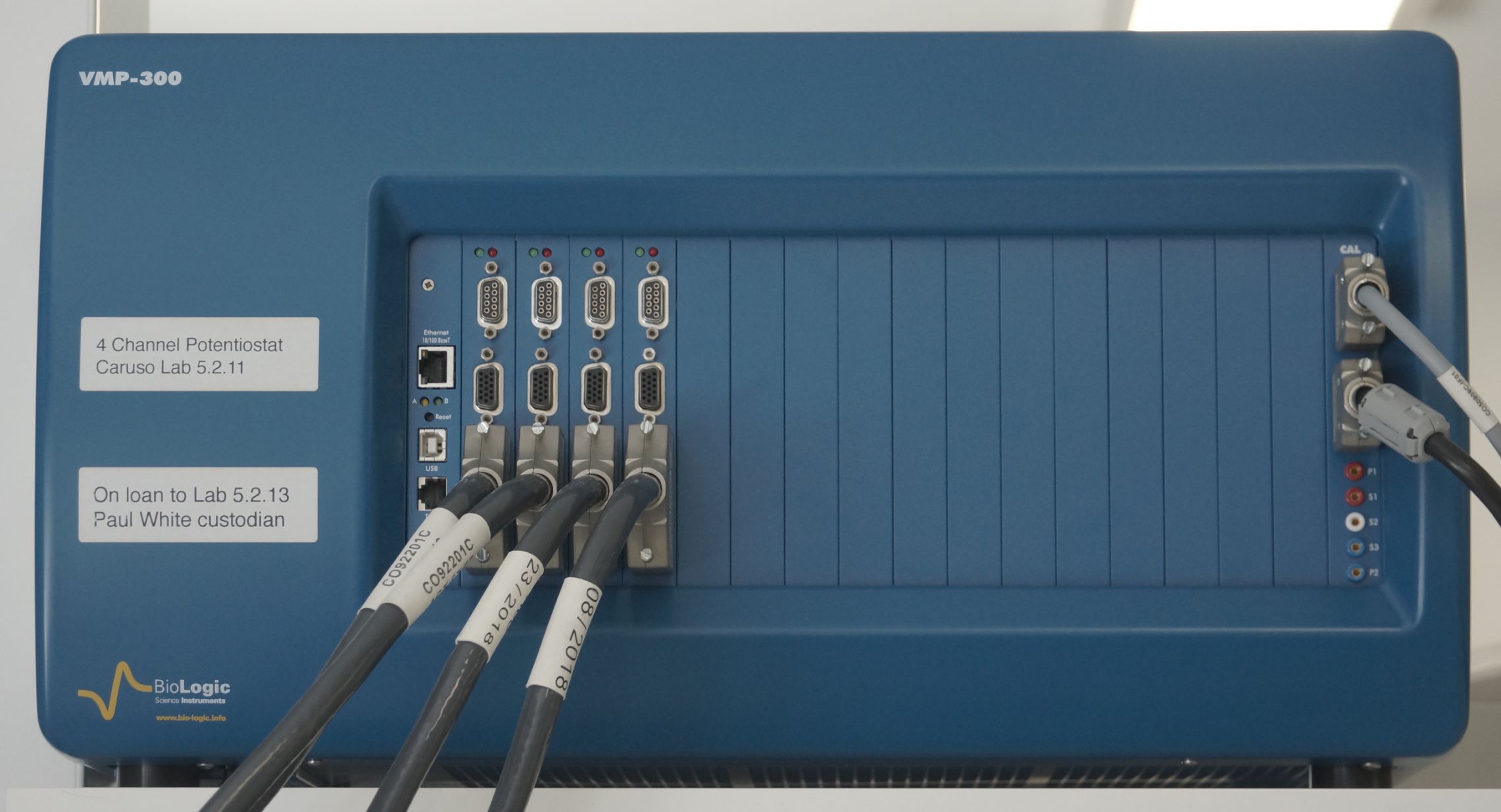
Used for electrochemical experiments of metal corrosion samples. Typical test methods, which are customised by the user, include OCP (open circuit potential), PDS (potentiodynamic scan), LPR (linear polarization resistance) and EIS (electrochemical impedance spectroscopy).
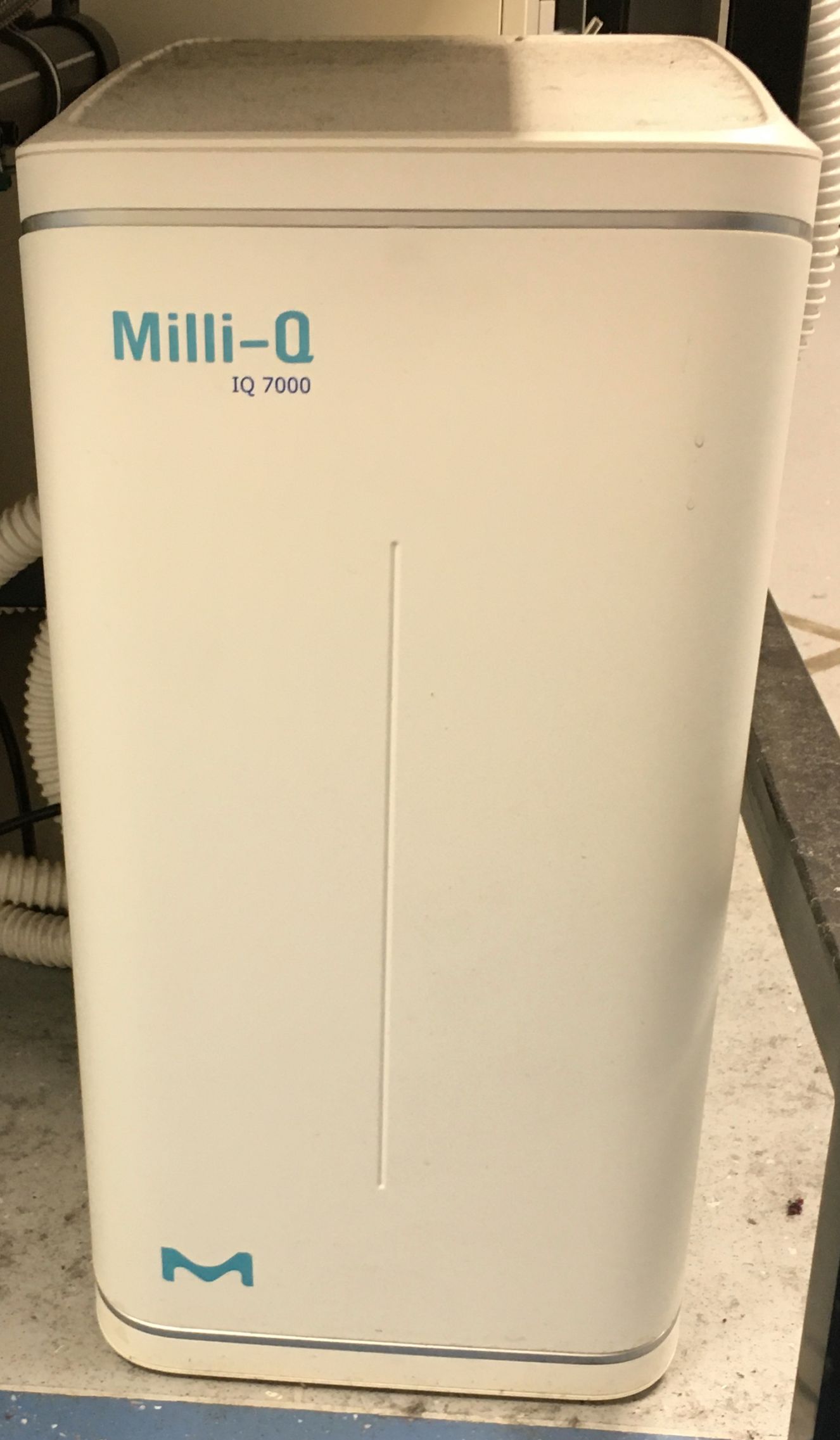

Used for producing high-quality, low-conductivity (>18 MΩ) deionised water for experiments.

Used for making precise Vickers (HV), Knoop (HK), Brinell (HB), and fracture toughness (Kc) measurements.

The RG2 2 kg payload robot arm gripper provides intelligence, fast deployment, easy customization, and easy programming. The operating software decreases engineering & manufacturing time significantly. The RG2 gripper is a tool for wide range of applications and used in our lab for high-throughput electrochemical testing.
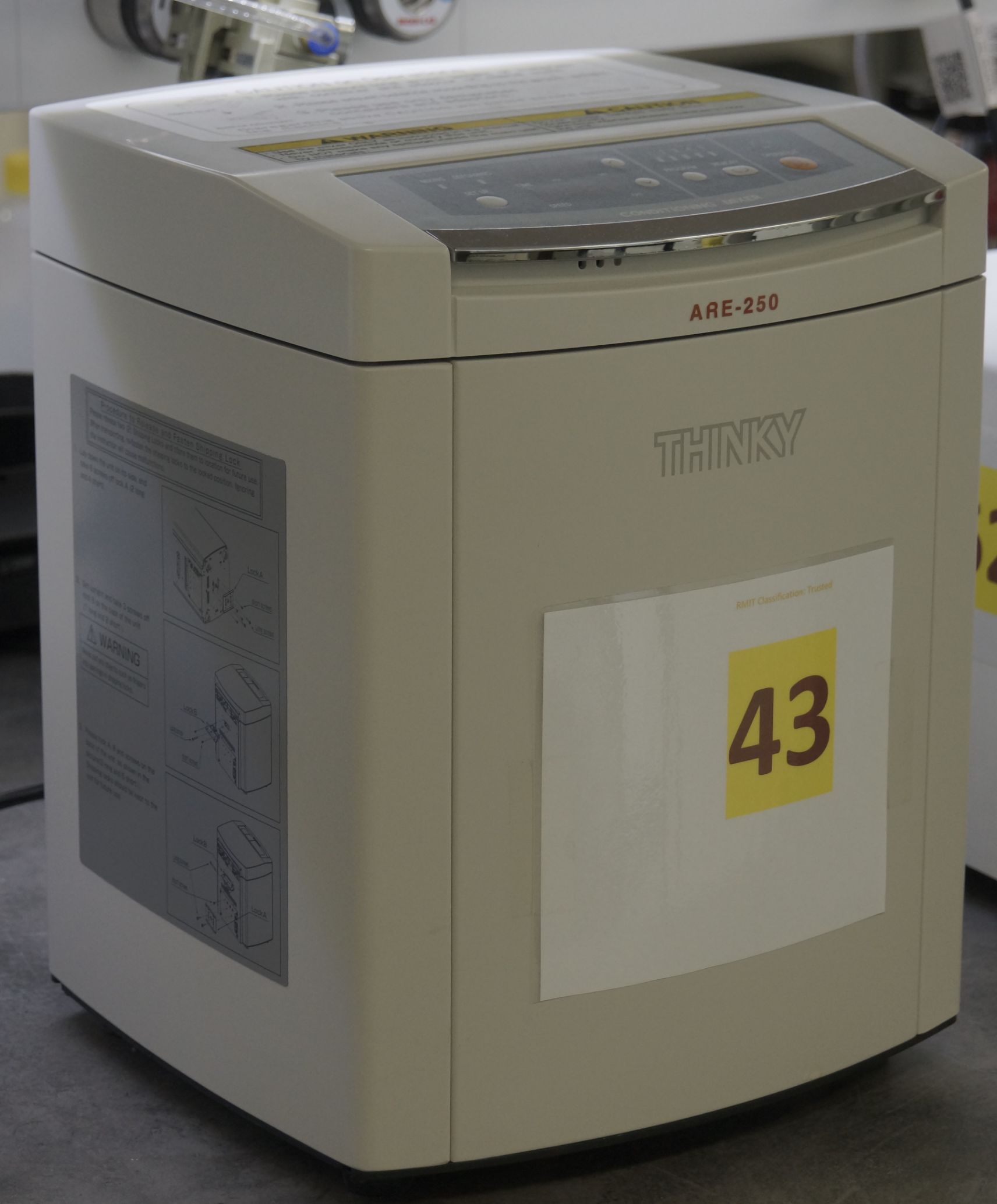
Used to rapidly mix powders with viscous liquids. Our typical use cases involve mixing corrosion inhibitor powders into polyurethane or epoxy prior to coating on metal samples.

The Micromeritics TriStar II provides fully automated surface area & porosity measurements on solid materials by using the technique of gas adsorption. This tabletop instrument is designed to analyse up to three samples simultaneously.
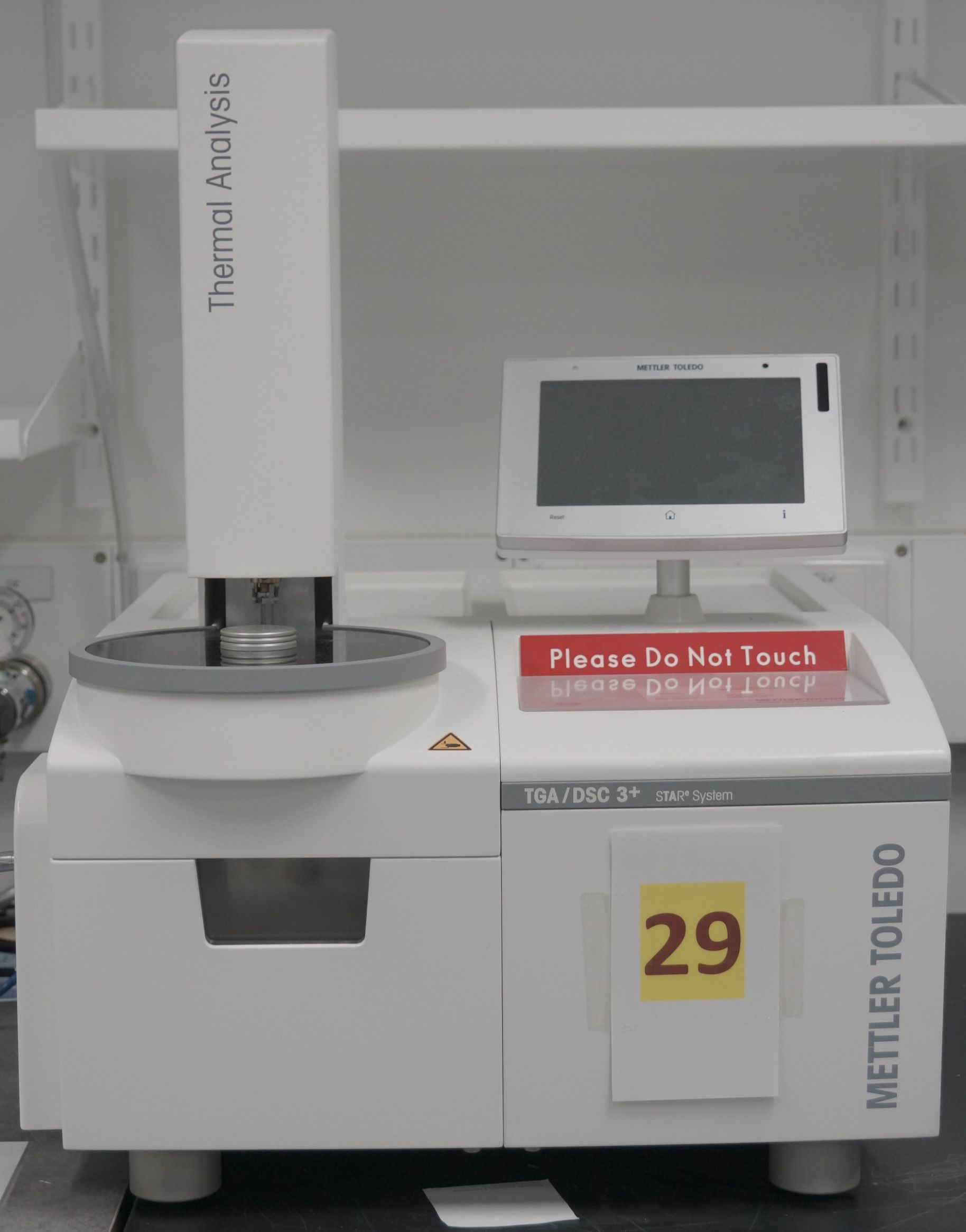
Thermogravimetry (TGA) is a technique that measures the change in weight of a sample as it is heated, cooled, or held at constant temperature. Its main use is to characterize materials for their composition. It is also equipped with a differential scanning calorimetry (DSC) sensor for simultaneous detection of thermal effects that do not show a weight loss.
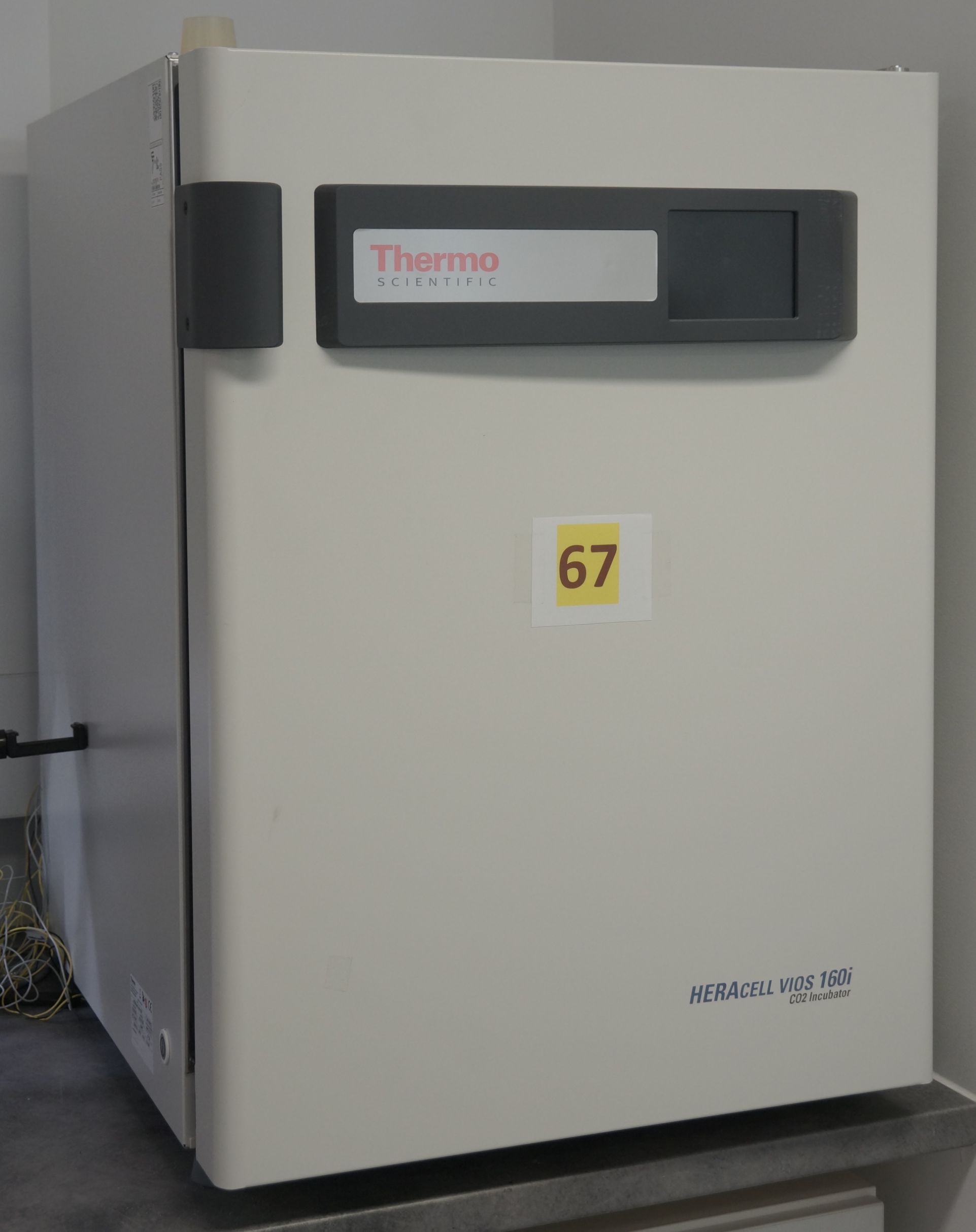
An incubator with controllable temperature, relative humidity, and carbon dioxide concentration.

The Celestron Handheld Digital Microscope Pro is an easy to use, low-power microscope with a 5 MP sensor camera system for capturing photos & video. Being portable, it can be used in the field, i.e. away from the lab.
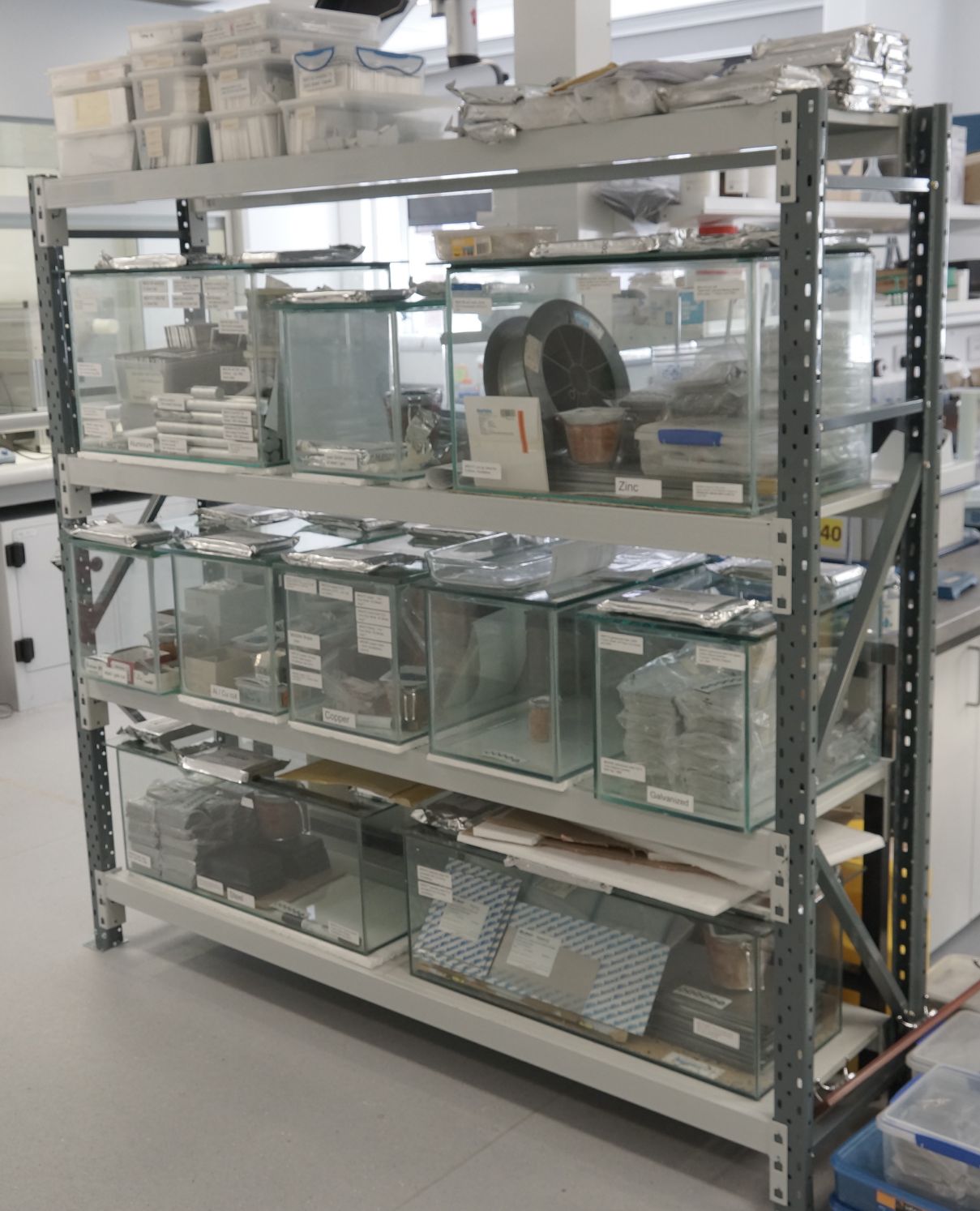
Numerous metal samples used for electrochemical testing & coatings applications, including a wide range of aluminium alloys, steels, galvanized steels, zinc, copper, and others.

These are portable, ceiling-mounted fume extraction arms used to enhance the removal of odorous vapours generated during benchtop experimental work.
Bio-implant development

Used for making thin films by dropping droplets of solution onto samples.

Used for cutting metal samples to be mounted for optical or electron microscopy.

Used for grinding & generating polished cross-sections of samples for imaging. Up to 6 samples can be processed simultaneously.

Used for electrochemical experiments of metal corrosion samples. Typical test methods, which are customised by the user, include OCP (open circuit potential), PDS (potentiodynamic scan), LPR (linear polarization resistance) and EIS (electrochemical impedance spectroscopy).

Used for electrochemical experiments of metal corrosion samples. Typical test methods, which are customised by the user, include OCP (open circuit potential), PDS (potentiodynamic scan), LPR (linear polarization resistance) and EIS (electrochemical impedance spectroscopy).
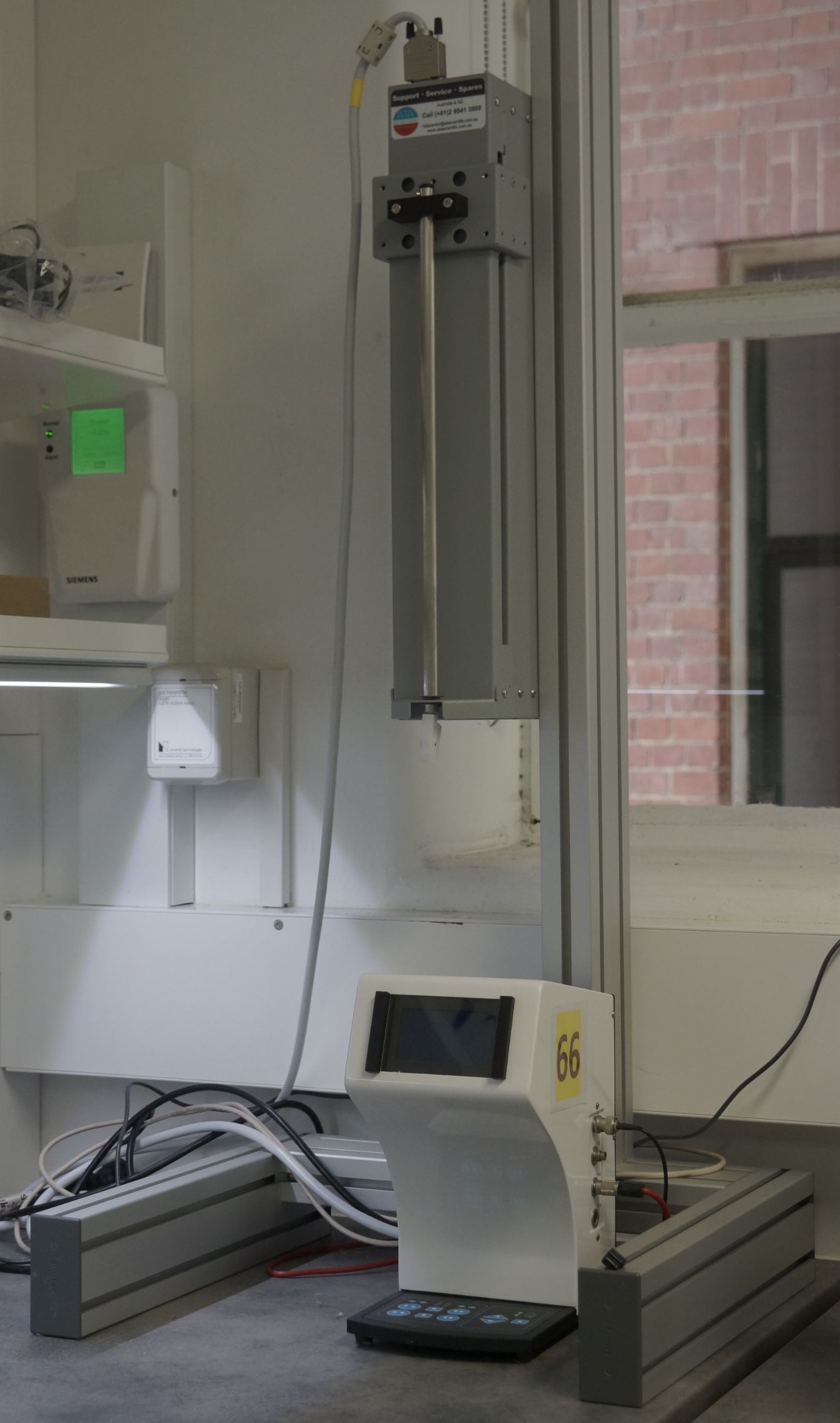
Used for generating thin films by dipping a substrate into a liquid followed by slow pull-out of the substrate from the solution.

High-speed medium-wave infrared (MWIR) camera for controlling & monitoring industrial processes operating at variable temperatures.


Used for producing high-quality, low-conductivity (>18 MΩ) deionised water for experiments.

Used for making precise Vickers (HV), Knoop (HK), Brinell (HB), and fracture toughness (Kc) measurements.

The RG2 2 kg payload robot arm gripper provides intelligence, fast deployment, easy customization, and easy programming. The operating software decreases engineering & manufacturing time significantly. The RG2 gripper is a tool for wide range of applications and used in our lab for high-throughput electrochemical testing.

Used to rapidly mix powders with viscous liquids. Our typical use cases involve mixing corrosion inhibitor powders into polyurethane or epoxy prior to coating on metal samples.

A proof ring is a simple, constant-load device for round tensile specimens. It is used to evaluate metal for environmental cracking resistance under uniaxial tensile loading. A tensile specimen is loaded to a particular stress to give a failure/no-failure test result. Quantitatively, the failure can be determined using a time-to-failure parameter.

The Micromeritics TriStar II provides fully automated surface area & porosity measurements on solid materials by using the technique of gas adsorption. This tabletop instrument is designed to analyse up to three samples simultaneously.

Thermogravimetry (TGA) is a technique that measures the change in weight of a sample as it is heated, cooled, or held at constant temperature. Its main use is to characterize materials for their composition. It is also equipped with a differential scanning calorimetry (DSC) sensor for simultaneous detection of thermal effects that do not show a weight loss.

An incubator with controllable temperature, relative humidity, and carbon dioxide concentration.

The Celestron Handheld Digital Microscope Pro is an easy to use, low-power microscope with a 5 MP sensor camera system for capturing photos & video. Being portable, it can be used in the field, i.e. away from the lab.

Numerous metal samples used for electrochemical testing & coatings applications, including a wide range of aluminium alloys, steels, galvanized steels, zinc, copper, and others.

These are portable, ceiling-mounted fume extraction arms used to enhance the removal of odorous vapours generated during benchtop experimental work.
Coating applications

Used for making thin films by dropping droplets of solution onto samples.
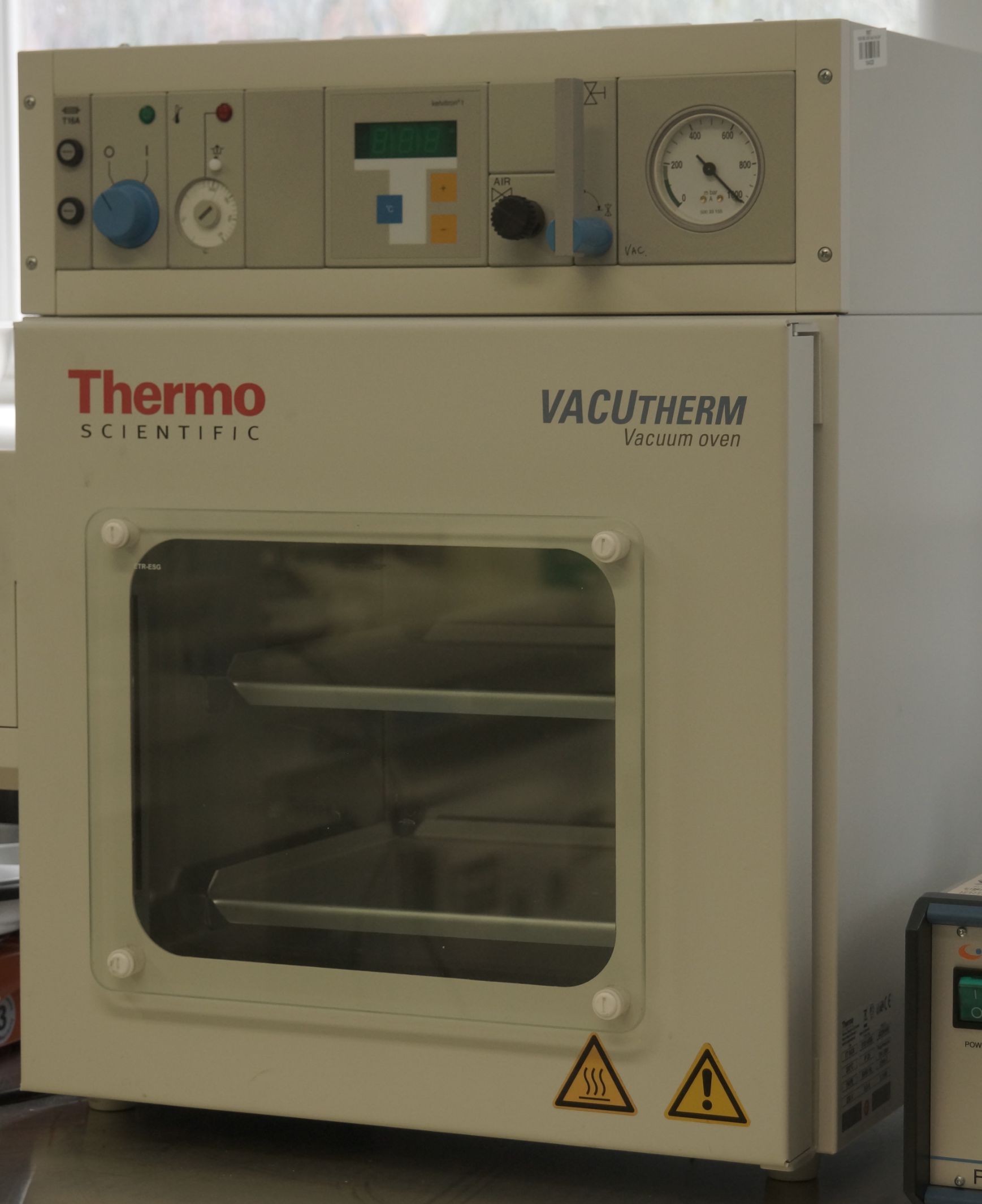
Used for heating samples under a vacuum to dry or cure.

Used for generating thin films by dipping a substrate into a liquid followed by slow pull-out of the substrate from the solution.

Used for making precise Vickers (HV), Knoop (HK), Brinell (HB), and fracture toughness (Kc) measurements.
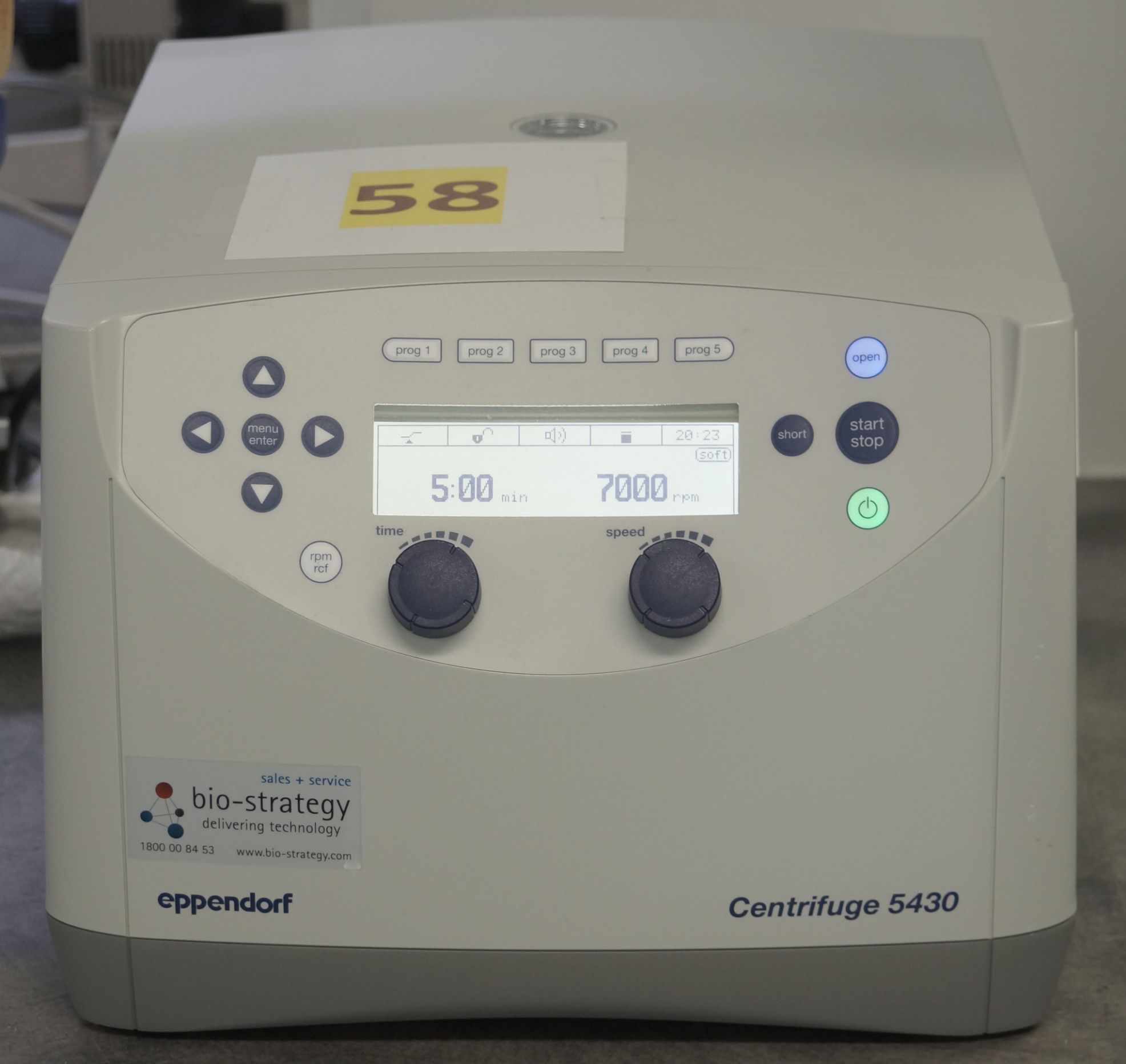
Combines the best features of a microcentrifuge (small footprint) & multipurpose centrifuge (versatility) in one instrument. This high-speed centrifuge offers centrifuge rotors for Eppendorf tubes and PCR strips, and rotors for microplates & conical tubes.

Used to rapidly mix powders with viscous liquids. Our typical use cases involve mixing corrosion inhibitor powders into polyurethane or epoxy prior to coating on metal samples.

A proof ring is a simple, constant-load device for round tensile specimens. It is used to evaluate metal for environmental cracking resistance under uniaxial tensile loading. A tensile specimen is loaded to a particular stress to give a failure/no-failure test result. Quantitatively, the failure can be determined using a time-to-failure parameter.

The Micromeritics TriStar II provides fully automated surface area & porosity measurements on solid materials by using the technique of gas adsorption. This tabletop instrument is designed to analyse up to three samples simultaneously.

An incubator with controllable temperature, relative humidity, and carbon dioxide concentration.

The Celestron Handheld Digital Microscope Pro is an easy to use, low-power microscope with a 5 MP sensor camera system for capturing photos & video. Being portable, it can be used in the field, i.e. away from the lab.

Numerous metal samples used for electrochemical testing & coatings applications, including a wide range of aluminium alloys, steels, galvanized steels, zinc, copper, and others.

These are portable, ceiling-mounted fume extraction arms used to enhance the removal of odorous vapours generated during benchtop experimental work.
Fluorescent nanosensors

A microwave reactor designed for small- to medium-scale microwave synthesis. Operating conditions include temperatures up to 300°C and pressures up to 3 MPa (30 bar) with safety features for high-speed, high-pressure, and/or high-temperature reactions.


Used for producing high-quality, low-conductivity (>18 MΩ) deionised water for experiments.

Combines the best features of a microcentrifuge (small footprint) & multipurpose centrifuge (versatility) in one instrument. This high-speed centrifuge offers centrifuge rotors for Eppendorf tubes and PCR strips, and rotors for microplates & conical tubes.
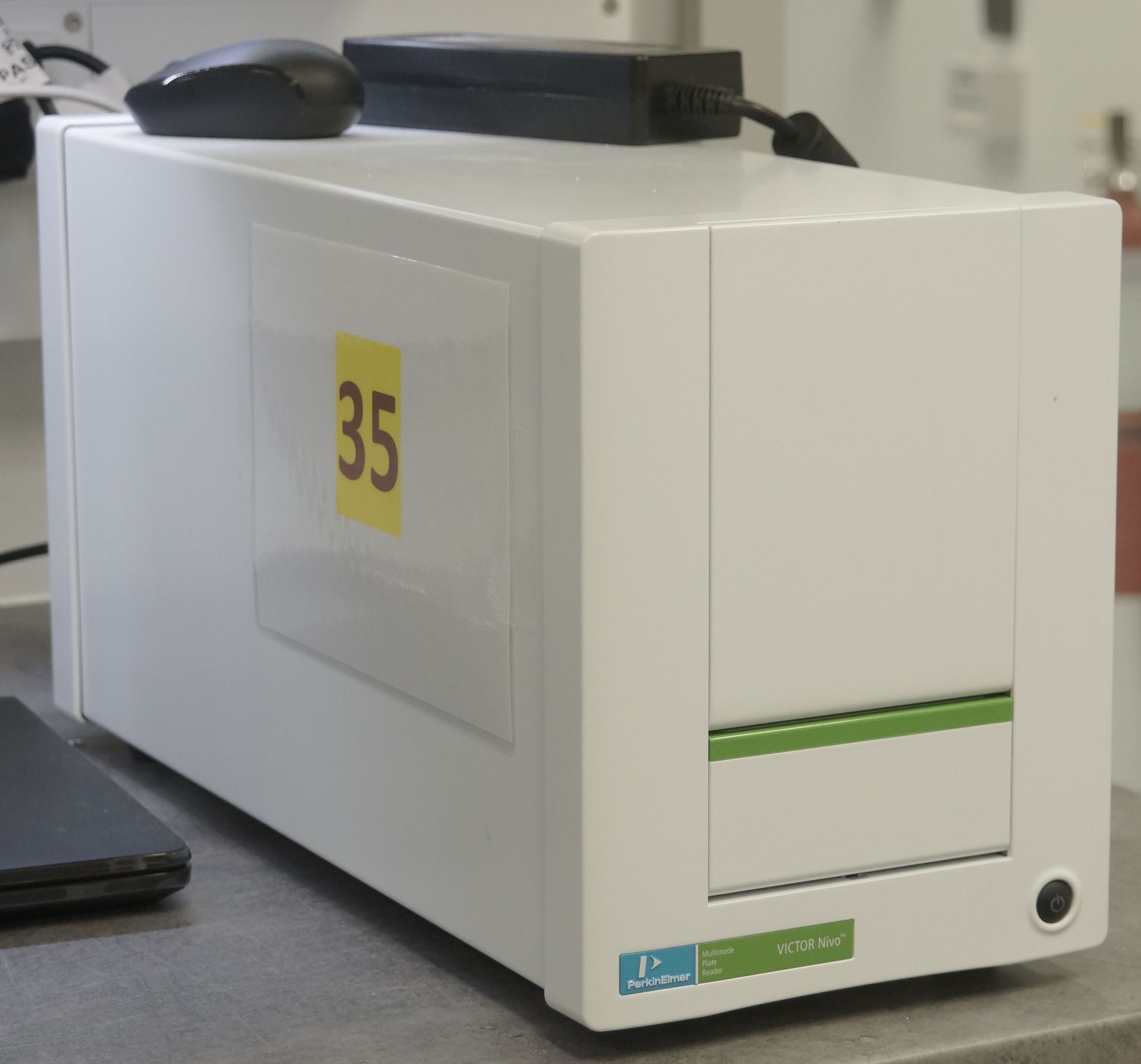
The VICTOR Nivo system is a high-performance filter-based multimode microplate reader equipped with all major detection technologies, including absorbance, luminescence, fluorescence intensity, time-resolved fluorescence, and fluorescence polarization.
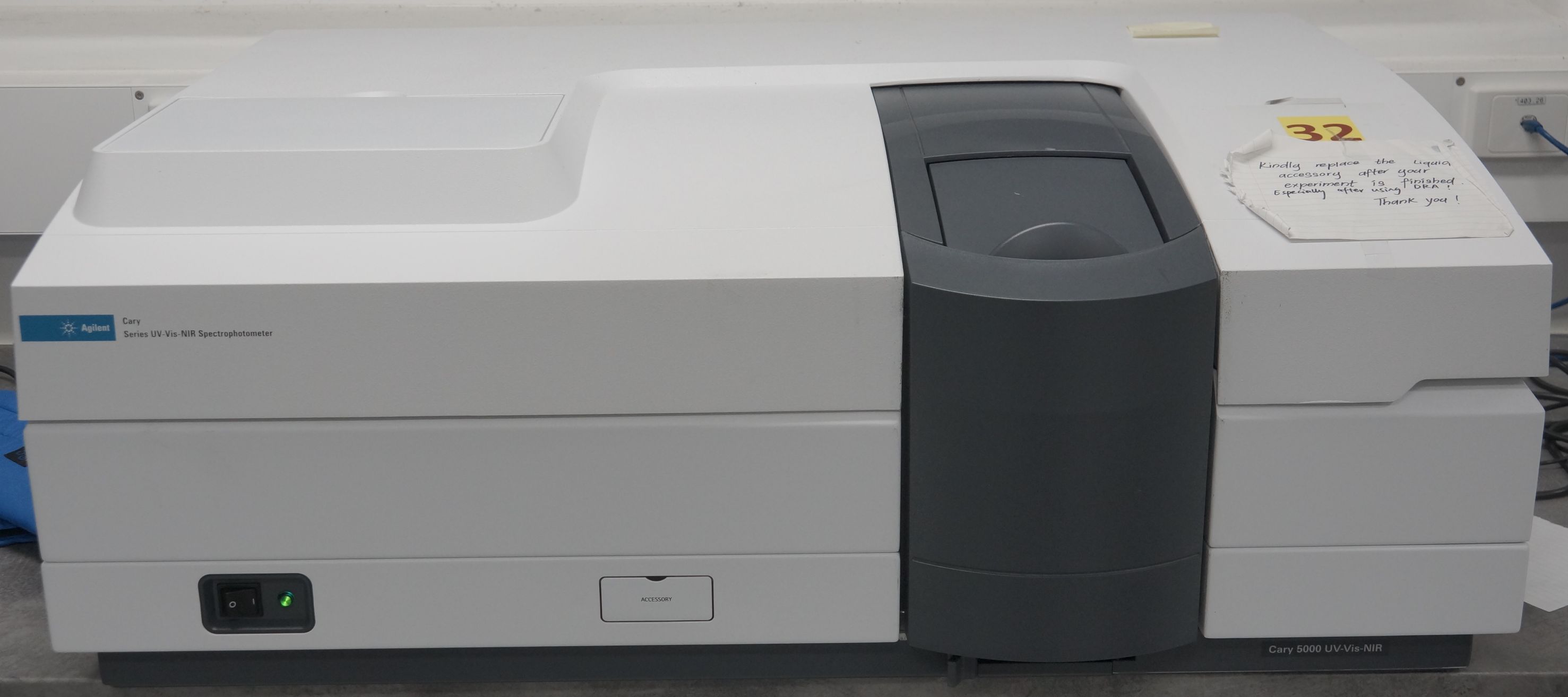
The Cary 5000 UV-Vis-NIR spectrophotometer is a high-performance UV-Vis & NIR spectrophotometer with photometric performance in the 1753300 nm range.
Chemical synthesis
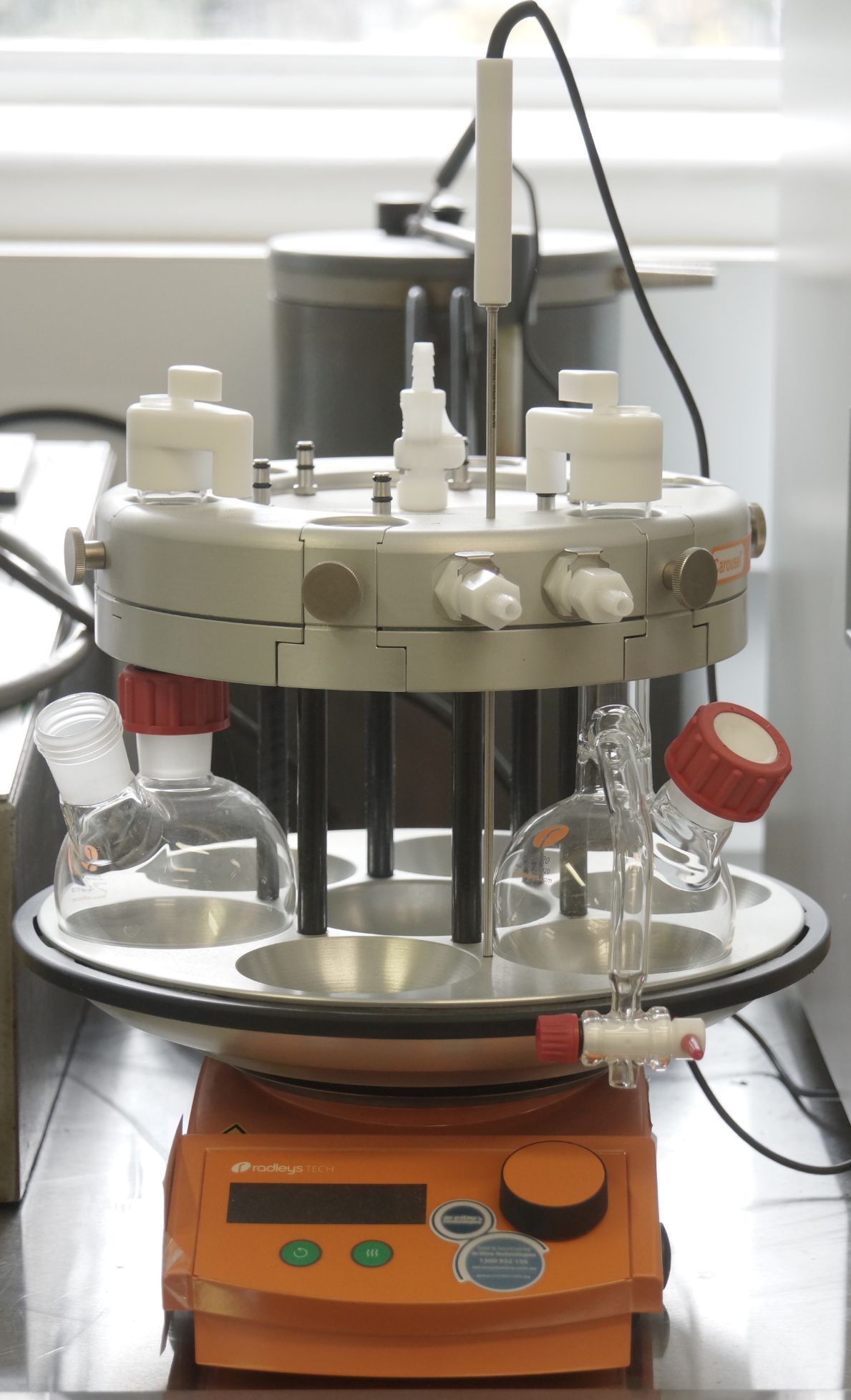
Simultaneously heats, stirs, and refluxes multiple samples to perform chemical reactions under an inert atmosphere.
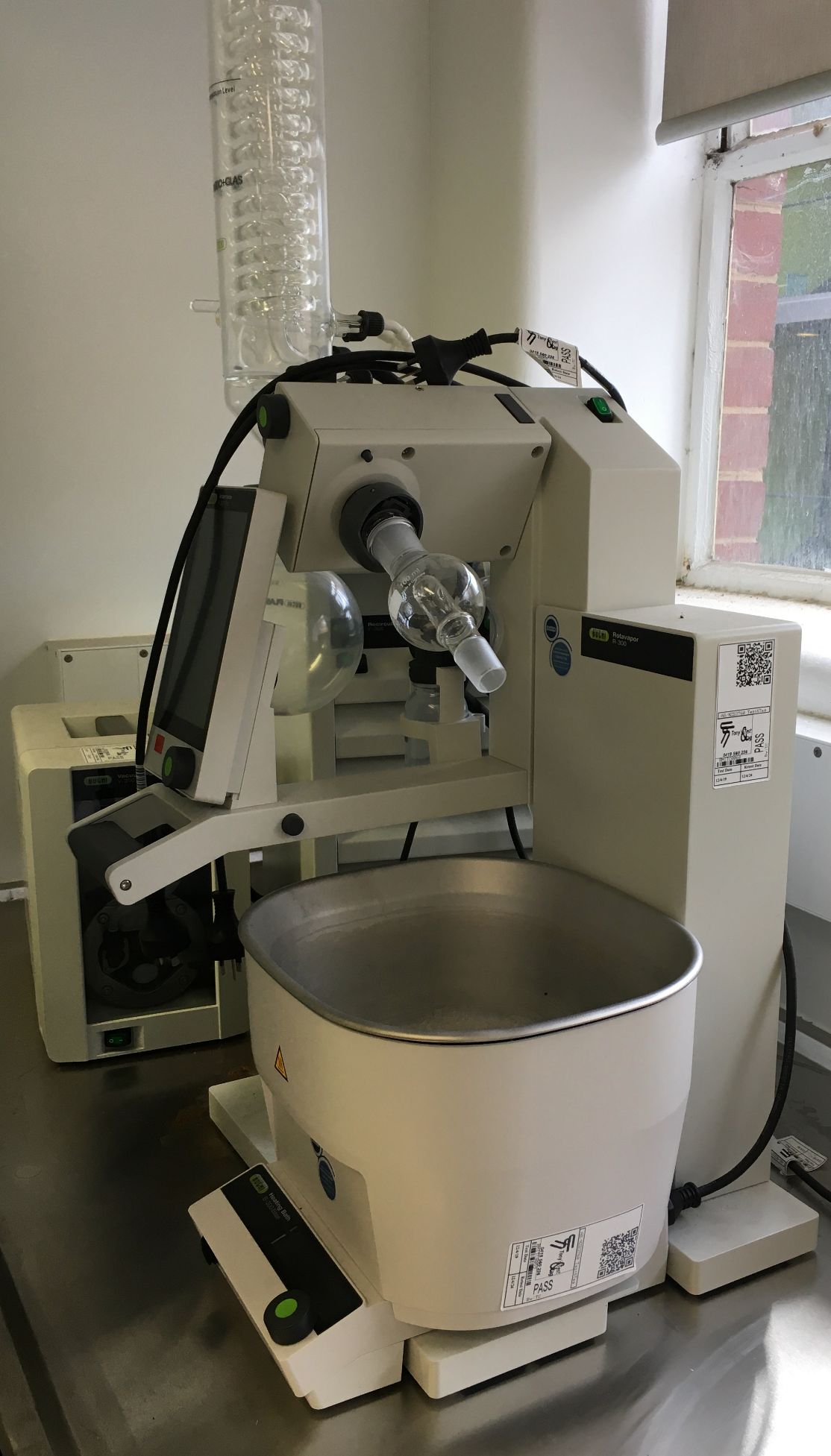
Used for removing solvent after a chemical reaction to isolate or concentrate a dissolved chemical product.


Used for producing high-quality, low-conductivity (>18 MΩ) deionised water for experiments.

Used to achieve high recovery of pure product quickly using high pressure, minimum solvent, and a multiwavelength UVvisible detection system.

Combines the best features of a microcentrifuge (small footprint) & multipurpose centrifuge (versatility) in one instrument. This high-speed centrifuge offers centrifuge rotors for Eppendorf tubes and PCR strips, and rotors for microplates & conical tubes.

The VICTOR Nivo system is a high-performance filter-based multimode microplate reader equipped with all major detection technologies, including absorbance, luminescence, fluorescence intensity, time-resolved fluorescence, and fluorescence polarization.
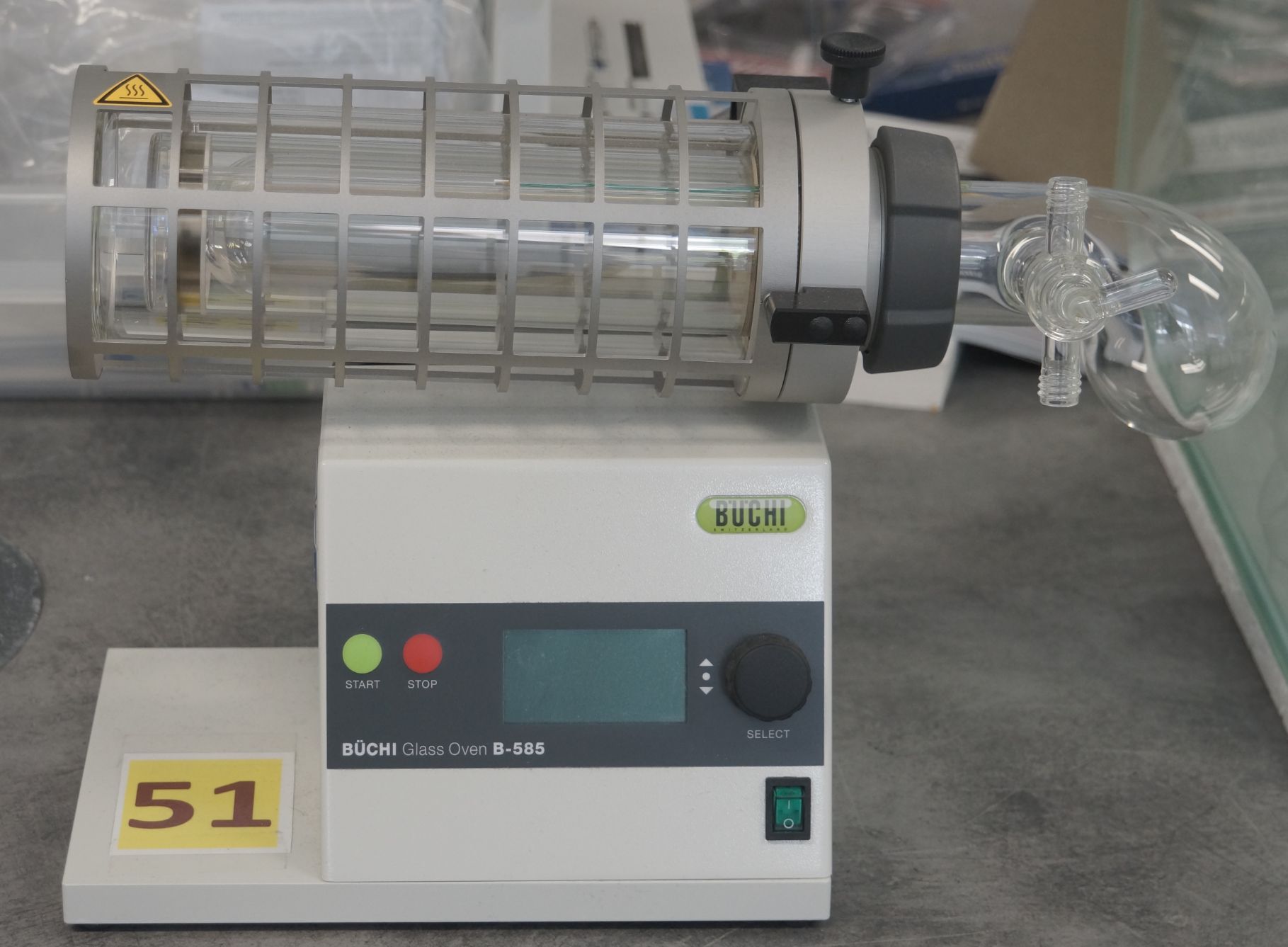
The Glass Oven B-585 can distil, sublimate, freeze-dry, or dry small amounts of sample.

Thermogravimetry (TGA) is a technique that measures the change in weight of a sample as it is heated, cooled, or held at constant temperature. Its main use is to characterize materials for their composition. It is also equipped with a differential scanning calorimetry (DSC) sensor for simultaneous detection of thermal effects that do not show a weight loss.

The Cary 5000 UV-Vis-NIR spectrophotometer is a high-performance UV-Vis & NIR spectrophotometer with photometric performance in the 1753300 nm range.

An incubator with controllable temperature, relative humidity, and carbon dioxide concentration.

These are portable, ceiling-mounted fume extraction arms used to enhance the removal of odorous vapours generated during benchtop experimental work.


